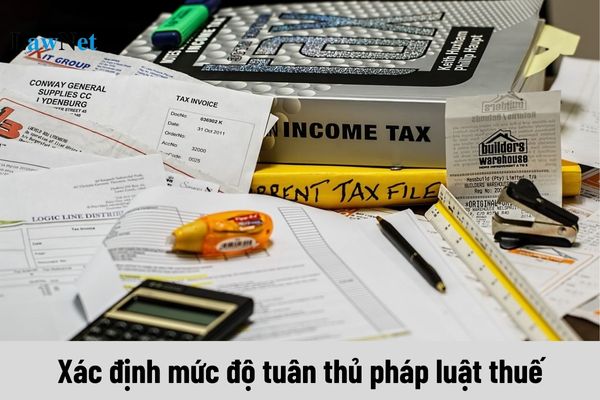What are methods for assessing the level of compliance regarding tax law in Vietnam?
What are methods for assessing the level of compliance regarding tax law in Vietnam?
According to Clause 6, Article 3 of Circular 31/2021/TT-BTC, tax compliance assessment is the collection, analysis, verification, and cross-checking of information regarding the activities and compliance with tax laws through criteria and evaluation indicators to classify taxpayer compliance levels.
Based on Article 5 of Circular 31/2021/TT-BTC, the level of tax compliance and the risk level of taxpayers are determined using one or a combination of the following methods:
- Scoring and classification by points.
- Machine learning method.
- Ranking method according to the portfolio.
What are regulations on assessment and classification of taxpayers’ compliance in Vietnam?
According to Clause 3, Article 4 of Circular 31/2021/TT-BTC, the assessment and classification of taxpayers’ compliance in Vietnam are conducted automatically, periodically, using one or a combination of methods stipulated in Circular 31/2021/TT-BTC based on legal provisions, tax management procedures, tax management measures, taxpayer segmentation, criteria stipulated in Circular 31/2021/TT-BTC, and the taxpayer database.

What are methods for assessing the level of compliance regarding tax law in Vietnam? (Image from Internet)
What are measures for improving tax compliance levels in Vietnam?
According to Article 14 of Circular 31/2021/TT-BTC, the tax authority analyzes the nature of behaviors, and scales of each compliance level from taxpayers to develop plans for enhancing tax compliance with appropriate handling measures as follows:
- For highly compliant cases: They are considered for inclusion in the list of taxpayers to be commended and rewarded for tax law compliance.
- For cases needing compliance improvement:
+ Collaborate with relevant agencies, organizations, and tax agents to implement support measures for taxpayers to perform tax procedures; organize meetings with taxpayers, dialogue conferences, seminars, and training to help taxpayers properly fulfill their tax obligations;
+ Research and amend policies, simplify administrative procedures, implement support measures, and apply information technology to facilitate tax declaration and payment, saving time and compliance costs for taxpayers;
+ Classify risks and apply tax management measures based on the risk levels of taxpayers stipulated in Articles 15 to 22 of Circular 31/2021/TT-BTC.
What are criteria for evaluating tax compliance levels in Vietnam?
According to Appendix 1 of Circular 31/2021/TT-BTC, the criteria for evaluating the tax compliance level of taxpayers for the year 2024 comprises six groups of criteria:
- General information about the enterprise.
- Fulfillment of tax declaration and payment obligations as required.
- Compliance with the policies on the management and use of invoices and documents.
- Administrative violation behavior.
- Tax debt status.
- Other criteria.
Detailed criteria for evaluating the tax compliance level of taxpayers are as follows:
| No. | Criteria Group | Criteria |
|---|---|---|
| (1) | (2) | (3) |
| 1 | Operation status of the taxpayer | The taxpayer is operating and not listed by the tax authority as inactive at the registered address within the past two (02) years from the evaluation date. |
| 2 | Fulfillment of tax declaration and payment obligations | The taxpayer has declared and paid taxes as required within the past two (02) years from the evaluation date. |
| 3 | Compliance with invoice and document management policies | The taxpayer complies with invoice and document management policies within the past two (02) years from the evaluation date. |
| 4 | Administrative violation behavior | The taxpayer has been penalized for administrative violations regarding taxes and invoices within the past two (02) years from the evaluation date. |
| 5 | The taxpayer has been penalized for administrative violations concerning tax evasion and tax deficiencies within the past two (02) years from the evaluation date. | |
| 6 | The taxpayer has engaged in unlawful use of invoices within the past two (02) years from the evaluation date. | |
| 7 | The taxpayer has been penalized by tax authorities for violations of non-compliance with tax inspection, audit decisions, and enforcement of administrative tax decisions within the past two (02) years from the evaluation date. | |
| 8 | Tax debt status | The amount of tax debt and the number of days of delay in paying tax debt at the time of assessment. |
| 9 | Other criteria group | Other criteria stipulated in relevant legal documents. |

